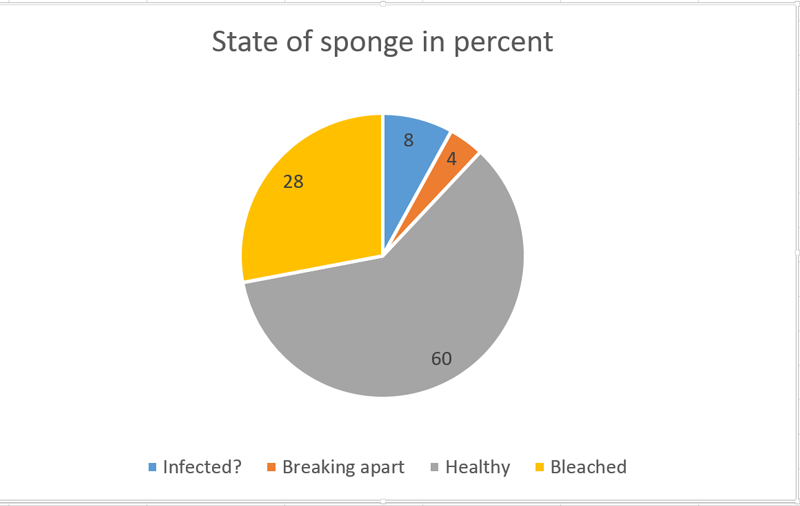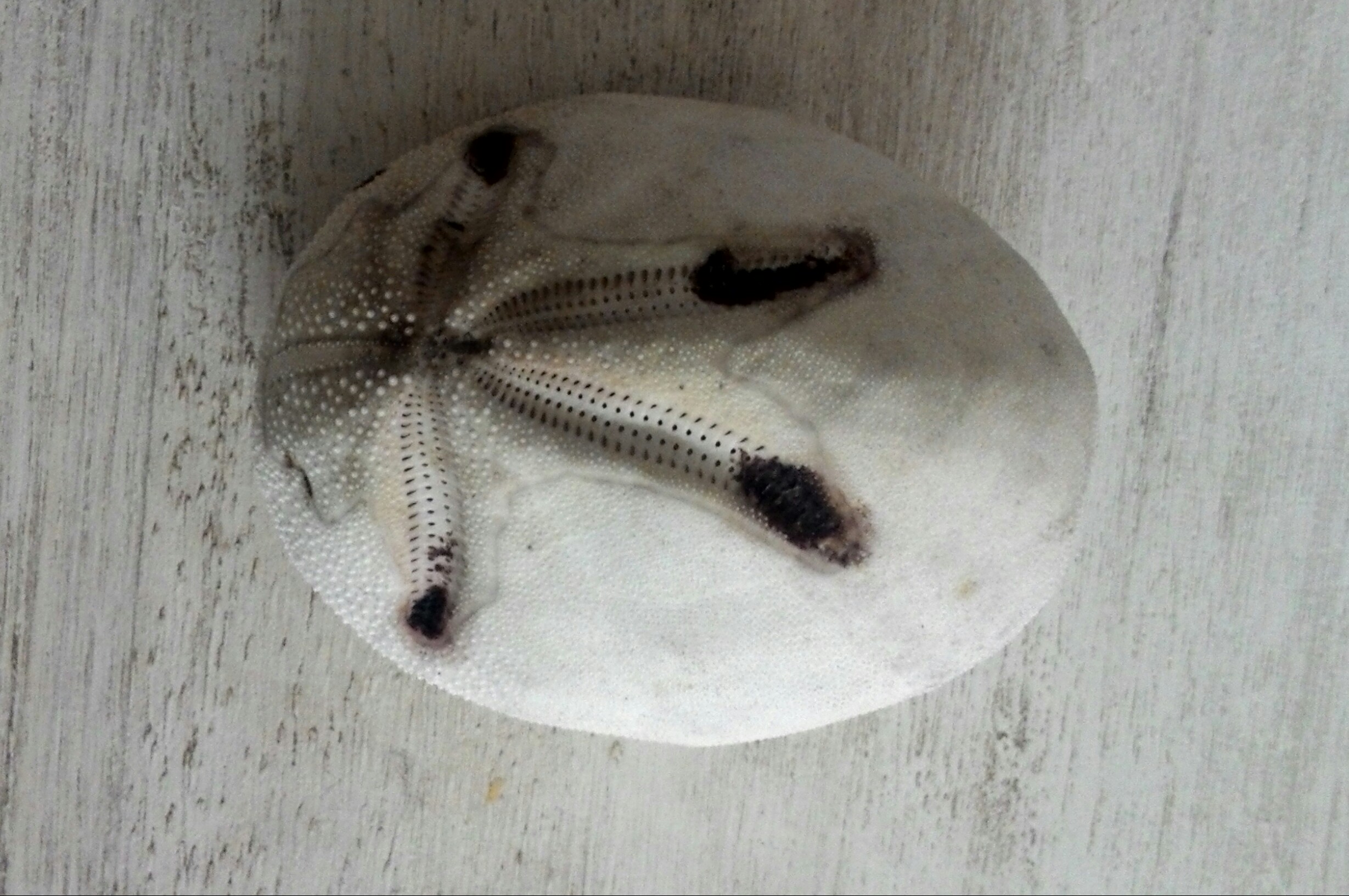Dear All,
As you might have seen on our media channels already, we are currently experiencing a rather worrying disease event in some of the reefs on Koh Phangan.
Here is a short timeline of the events that we have observed, and the current monitoring regime:
Monday 30.03.2015: First affected Cone Top Shells (Tectus sp.) were found in the bays of Mae Haad, Haad Salad and Haad Yao (image 1). The snails were observed lying on the side, fish and crustaceans appeared to be feeding on the tissue. Increased Coral or Sponge bleaching was not observed, apart from the ‘white blotch’ phenomenon which is regularly observed on Porites sp. in this area. Temperatures where not elevated, ranging between 29-30 degrees Celsius at 5 meters depth (dive computer measurements).
Tuesday 31.03.2015: First barrel sponges (Xestospongia sp.) were observed being covered in white mucus (image 2). Sponge bleaching was not observed, surface water parameters appeared to be normal for the area (pH, Sal, DO, Temp), bottom temperature remained at 29-30 degrees Celsius. Tectus sp. mortalities were confirmed, with a fatality rate of 98% per 150 meters of transect. First, isolated coral bleaching was observed.
Wednesday 01.04.2015: Barrel Sponges showed partial bleaching (image 3), mucus still present. Partial coral bleaching of branching corals (Acropora spp., and Pocillopora spp.), became widespread (image 4 and 5). First crustacean mortalities, dead fish and striations (phytoplankton bloom?) were visible on the surface.
Thursday 02/04/2015: A survey of a 5 meter belt\ 150 m transect revealed that an average of 77-91% of Xestospongia sp. were affected by the phenomenon in Mae Had. We took samples of 9 affected, and 6 unaffected sponges (only 6 were found) and preserved them in 70% Ethanol for toxicological investigations, we extracted 3 samples of the mucus and preserved it in the same manner. Site showed widespread partial bleaching and few full bleached specimens of Acropora spp. and Pocillopora spp.. White blotch incidents on Porites sp., Lobophyllia sp. and Favia sp. seemed to be more prevalent, but were not monitored.
Friday 03.04.2015: Measurements impossible, because of unpredicted wind and waves
Saturday 04.04.2015: We took 3 bleached/affected sponge samples and 3 healthy samples for Chlorophyll-a content (extracted in 90% Acetone overnight, xx and xx respectively). Surface sediment was sampled in triplicates for BOD and Chlorophyll a, but the samples were lost. Surface water was measured for pH (8.41), Salinity (37 PSU, calibration error?), DO (17.3, calibration error?), temperature (31.7 degrees Celsius), surface Chlorophyll a (xx). Additionally, surface water was incubated for 1.5 hours for BOD (Respiration 1.26 mg/L, stdev 0.66; production 0.06 mg/L, stdev 0.69). Intense paling of massive corals (Porites lobata, spp.) was observed (image 5). Mucus was not found on any of the sponges, but mucus production on Acropora sp. and Porites sp. appeared to be pronounced. Sedimentation is common on Koh Phangan, and elevated mucus production is not unusual. Additionally, one water sample from a dead Tectus sp. was extracted with a syringe and preserved in 70% Ethanol.
Sunday 05.04.2015: We installed a permanent transect in a section of the reef with relatively high live coral cover (avg. 51.8% LCC, stdev. 13.37), deployed 3 HOBO pendant loggers measuring temperature and light in 30 minute intervals. Xestospongia sp. mortality was 100% (5 disintegrating individuals on 150m of transect, see image 6), mucus from one sponge was extracted (syringe) and preserved in 70% Ethanol. Only 1 deceased Tectus was found. Water parameters: pH 8.31, Salinity 36.9 PSU, DO 16.8 mg/L, Temperature 30.8 degrees Celsius in the morning.
Observations in the afternoon: high organic matter content in water column, distinct thermocline (32 Surface, 29-30 bottom, dive computer). A single wave of app. 0.5 meter hight entered the bay. Sponge bleaching 100 %, partial branching coral bleaching 70% (50m transect, no replicates).
A spot-check of the adjacent bay Had Khom showed app. 60% healthy barrel sponges.
Monday 06.04.2015: 2 transects of 3x 150m\ 5m belt revealed 0 healthy Xestospongia sp. in Mae Haad bay, with 46% fully bleached, 40% partially bleached and app. 14% disintegrating. Additionally, fully bleached individuals of Haliclona sp. were observed (see image 7). About 30-50 seaurchin skeletons were observed on the sand reef interface at 8m depth. Pronounced thermocline, 29 degrees Celsius vs. 30.7 at the surface (It felt much stronger). Physio-chems:
| pH | 8.42 |
| Temp | 30.7 |
| Sal | 38 |
| Do | 34.8 |








